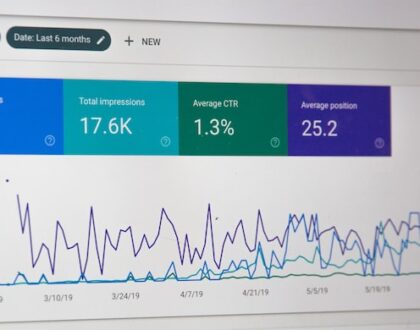How Live Commerce May Help Businesses with a Limited Budget

by local
If you’ve ever come across QVC while scrolling through the stations, you might feel as if you’ve stumbled across a relic from the 1980s. Nonetheless, in 2022, the retail channel generated $9.9 billion in annual revenue.
Today, several retail behemoths, from Amazon to Nordstrom, are attempting to emulate their success online. Similarly, small business owners are finding it to be an efficient eCommerce marketing strategy for reaching new clients, even on a limited budget.
What is live commerce?
Live commerce, often known as live shopping or live stream shopping, elevates platforms such as QVC and HSN to new heights. Rather than simply exhibiting and discussing things, the livestream host creates an interactive experience for potential purchasers, soliciting feedback, opinions, and reactions. Viewers can interact in the live conversation and even make purchases via the broadcasting site.
Live commerce is becoming increasingly popular.
Live commerce has become popular in China since its inception in 2016. Experts believe that live commerce sales in China will be $497 billion in 2022, accounting for approximately 7.7% of total retail sales in the country.
Although this type of retail is less popular in the United States than it is in China, it began to gain traction in 2020. After the pandemic affected offline shopping, vendors used live streaming to capture parts of in-person selling that were lacking from typical eCommerce platforms.
According to a Morning Consult survey, only 22% of adults in the United States had attended a live shopping event by the end of 2022, and only 31% were aware of its existence. However, its effectiveness has prompted shops to try it and social media companies to develop live shopping capabilities.
“The tech is getting so much better just in the last year, where all of the social platforms are enabling buying a product,” says Melinda Lee, chief content officer of Stage TEN, a live commerce platform. “There’s still a little ways to go to make it easy for people who want to do it, but it’s there.”
Among the eCommerce technology trends driving the growth of live commerce:
Social commerce – As Lee mentioned, the introduction of social shopping capabilities such as Pinterest Shopping List and Facebook Live Shopping has made it easier than ever to get started with live commerce. In fact, social commerce is expected to develop three times faster than traditional eCommerce, owing to younger consumers who grew up in digital surroundings.
Advancements in augmented reality (AR) and virtual reality (VR) are creating new opportunities to bridge the gap between in-person and online purchasing experiences. Live broadcasters can use AR and VR to offer more immersive experiences, such as showcasing products in different settings or doing makeovers on the spot.
The modern-day advantages of live commerce
Regardless of how much opportunity it has for expansion, live commerce can be especially beneficial for small business owners who lack the means or ability to implement extensive marketing strategies. “The barrier to entry is almost nothing,” notes Lee. “Anybody can make content.”
And if that isn’t persuasive enough, consider this: whereas the average eCommerce conversion rate is around 2.5%, Stage TEN customers see conversion rates of more than 10%.
Lee believes that one of the reasons live commerce is so effective is that it is easier to make data-driven judgments than other marketing tactics. “The whole time [a broadcaster is streaming], they’re gathering data on what it is that people want to know about the product and what attracts them to a live stream,” she said. “It’s almost like live case studies.”
Because viewers are willing to participate, data collection is as simple as inserting feedback prompts into the broadcast. Instagram, for example, allows you to include polls in your feeds. This type of interaction is increasingly vital now that cookie restrictions are making data harvesting more difficult for marketers.
People who watch live broadcasts do more than watch or interact with the streamer; they also interact with one another. People will actually log in early and stay late to communicate with the other viewers. The community becomes an element of the content because it is mostly determined by the questions people ask and how they react to one another.
How to Maximize a Live Commerce Stream
Getting started with live commerce can be intimidating at first, just like any other new enterprise. However, the following pointers will help you get started on the right foot. High follower count doeonly sometimes impliesgh engagement. It does not imply that such skills will translate to a live stream where they are selling a product.
Hire a nano-influencer.
If you don’t enjoy being in the spotlight, hiring an influencer to manage your live commerce campaign can be a cost-effective solution. Hiring nano-influencers (those with 1,000 to 10,000 followers) can be less expensive than hiring influencers with enormous followings, and it may even be more effective because their audiences are much more specialized. They have greater engagement rates than macro-influencers, their material is more relatable, and their followers place more trust in their recommendations.
In her experience hosting and providing creative direction on many live commerce streams, she has found that influencers who are honest and down-to-earth outperform those who are refined and polished. Because of their honesty, their “cult-like fans” believe their advice and will follow them anywhere.
Promote your live stream early and frequently.
It’More than engaging influencer to handle the live stream and call it quits. T is requiredhe event must be promoted ahead of time. Advertise the event on all of your social media platforms, include a countdown clock on your website, and encourage the influencer you work with to do some video promotion as well. “Make sure to work that into the talent’s contract because promotion is a separate service,” Gant said. Gift cards or discount codes can be effective incentives for individuals to tune in.
Repurpose content to increase its shelf life.
Live commerce broadcasts can continue to yield profits after they cease. In addition to using the data you gathered to learn how to better sell to interested customers, you can repurpose the recordings to create other types of films. You may edit and upload videos to YouTube, share clips on social media, and capture screenshots for your websites.
Give your brand some individuality.
Aside from the efficiency and accessibility of this marketing strategy, live commerce allows for distinction. To stand out in the cluttered world of eCommerce, businesses must leverage their branding. A livestream is an effective tool for brand building because of its authenticity.
“If you’re doing a live stream, you have no choice but to give your brand a personality,” Lee said. “There’s someone up there discussing the goods and demonstrating what your brand has to offer. People can ask questions, and it suddenly comes to life.
Start live streaming.
The built-in live streaming capability allows you to ‘go live’ whenever you want. Schedule an event for later, or begin streaming immediately. Then, share your video on YouTube and/or your eCommerce website. The latter can help you draw more customers to your store and keep them there for longer.
Recommended Posts

Can Attentiveness Actually Drive Campaign Success?
November 8, 2024

Maximizing Revenue Growth Through Sales and Marketing Alignment
October 11, 2024

The FTC’s Position on Hashing Should Wake Up Internet Advertisers
September 2, 2024
